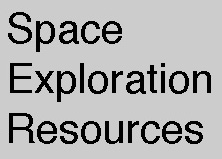Goals of the Meeting
- Maximize science return from the LRO mission.
Provide the LRO mission stakeholders (ESMD, SMD, LRO project, and the lunar
science community) with an understanding of LRO instrument capabilities,
measurements to be made during the exploration and science mission phases,
and planned products.
- Engage the lunar science community.
Present LRO instrument targeting plans and planning process to foster a better
understanding of LRO capabilities that will enable the broader science community
to contribute effectively to targeting lunar features by the LRO Narrow Angle Camera,
Mini-RF synthetic aperture radar, and the Diviner Lunar Radiometer Experiment.
- Prepare for the future of lunar exploration.
Ensure that LRO results feed forward to planning for future robotic and human
exploration and utilization of the Moon.
Meeting Format
- Summarize the LRO mission and instruments and present measurement objectives for exploration and science. Discuss plans for science during Science Mission Directorate (SMD) phase of the mission with input from both LRO project and instrument team members. Emphasize LRO instruments, specifically LROC and Mini-RF but also including Diviner and LOLA (Lunar Orbiter Laser Altimeter), that will be used to acquire synergistic targeted data for science applications.
- Discuss LRO science measurement goals, instrument targeting plans and current targeting database(s), and operational constraints on targeting. Demonstrate the online public targeting tool for the LRO Camera.
- Address lunar science goals in 7 major themes, with moderator-led topical science (panel) presentations and contributed talks. Talks will focus on aspects of lunar science that can be addressed by LRO measurements, with emphasis on specific targets on the lunar surface.
- Panel 1 (Lunar Missions and Measurements for Science) is a plenary session that sets the stage by presenting expected results from other ongoing and planned lunar missions.
- Panels 2 to 7 run two at a time for 4 hours duration to maximize time for input and discussion of prioritized targets.
- All presentations are accompanied by abstracts. Invited presentations cover the state of knowledge of major lunar science questions with emphasis on targets that will be characterized by LRO. Contributed presentations (talks and posters with accompanying 2-page abstracts) address possible LRO targets that are not already in the targeting plan and database. Poster presentations will have high visibility through short summary presentations and scheduled time for viewing and discussion.
- Tour the LROC Science Operations Center and explore options for more detailed instruction on using online targeting tools.
- A committee (selected from organizers, panel moderators and/or members, and community experts) prepares a meeting summary that captures prioritized science targets for LRO, ensuring that community input is represented.
Synthesis and Final Report Preparation
Based on meeting discussion and input, a committee (selected from organizers, panel moderators and/or members, and community experts) compiles a prioritized list of ESMD and SMD targets including rationale and relevant acquisition parameters. This list will feed into ongoing LRO targeting activities.
Publication Support
Meeting and publications support is provided by the Lunar and Planetary Institute.





